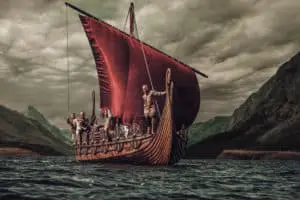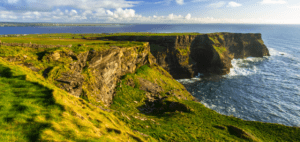Western Asia: the Diversity of Countries and Culture
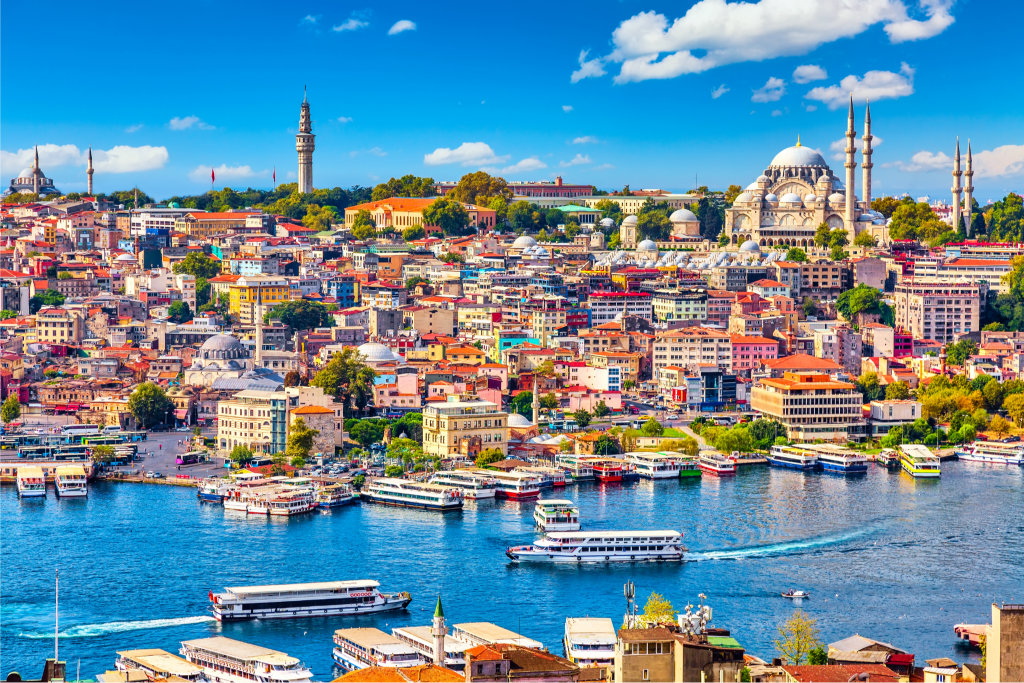
Updated On: April 22, 2024 by Panseih Gharib
When exploring Western Asia, many cultural and geographical wonders are waiting to be discovered. From the region’s historical significance to its diverse landscapes, Western Asia offers a rich tapestry of experiences for the discerning traveller.
It is a region that encompasses diverse countries, including Palestine, Iraq, Lebanon, Syria, and many more. It is often regarded as part of the Middle East. It is renowned for its deep-rooted Arab and Islamic influences, with countries such as Saudi Arabia, Iran, and Jordan playing significant roles in shaping the region’s cultural identity.
Geographical Features
The geographical features of Western Asia are incredibly diverse, encompassing everything from towering mountains and vast deserts to lush valleys and sparkling seas. From the snow-capped peaks of Mount Ararat in Türkiye to the lush coastal plains of Lebanon, every country has its unique geographical story. Here’s a glimpse into the region’s varied landscapes:
Mountains
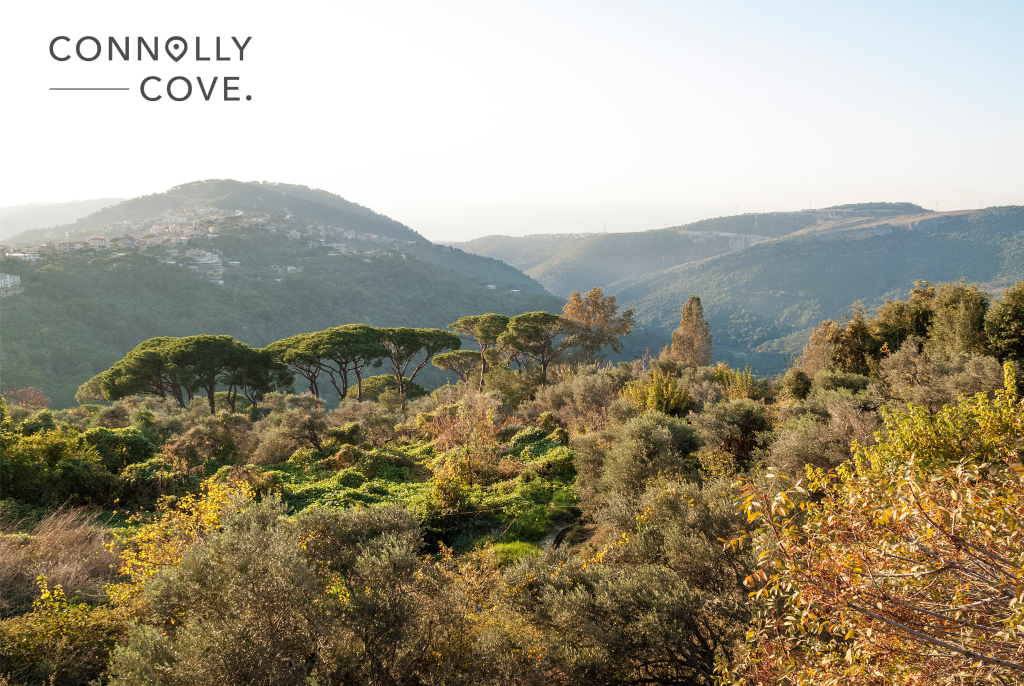
Western Asia is home to several impressive mountain ranges, including the Taurus Mountains in Türkiye, the Zagros Mountains in Iran and Iraq, and the Elburz Mountains in Iran. These ranges have shaped the region’s climate and provided natural barriers and resources.
Deserts
Aridity defines much of West Asia. The Arabian Desert, the world’s fourth largest, covers vast swathes of Saudi Arabia, Yemen, Oman, and the United Arab Emirates. Other notable deserts include the Syrian Desert and the Lut Desert in Iran. These harsh environments are home to unique ecosystems and have long been essential trade routes.
Red Sea
This narrow, elongated sea separates Africa from the Arabian Peninsula and is a crucial shipping route connecting the Mediterranean to the Indian Ocean. Its coral reefs are havens for marine life and popular diving destinations.
Zagros Mountains
These massive, rugged mountains stretch along the western border of Iran and into Iraq. They’re home to diverse ecosystems, ancient cave settlements, and important oil and gas reserves.
Mesopotamian Marshes
Located in southern Iraq, these vast wetlands were once one of the largest freshwater ecosystems in the Middle East. Home to unique vegetation and wildlife, they’re undergoing restoration efforts after facing severe ecological challenges.
Plateaus
Plateaus like the Anatolian Plateau in Turkey and the Iranian Plateau dominate the interiors of many West Asian countries. These elevated regions offer cooler temperatures and support agriculture and grazing.
Climate and Environment
The climate and environment of Western Asia vary widely, from the scorching heat of the Arabian desert to the more temperate climate of the Levant. The region is also home to unique ecosystems, from the rich biodiversity of the Gulf to the ancient olive groves of Palestine and the rugged mountains of Iran.
Countries of Western Asia
When it comes to exploring the countries of Western Asia, there is an abundance of cultural and geographical wonders waiting to be discovered. From the region’s historical significance to its diverse landscapes, Western Asia offers a rich tapestry of experiences for the discerning traveller.
Western Asia is often regarded as part of the Middle East. It is renowned for its deep-rooted Arab and Islamic influences, with countries such as Saudi Arabia, Iran, and Jordan playing significant roles in shaping the region’s cultural identity.
Iran
Iran, formerly known as Persia, has a rich history that dates back thousands of years. From the ancient Persian Empire to the Islamic conquests, Iran has witnessed the rise and fall of numerous dynasties, each leaving its mark on the country’s traditions, art, and architecture. The country’s capital city, Tehran, is a melting pot of Persian, Arab, and Turkish influences, making it a fascinating destination for history enthusiasts.
Iran’s past stretches back millennia, boasting empires that shaped history. The Achaemenid Empire, founded in the 6th century BC by Cyrus the Great, left behind the awe-inspiring ruins of Persepolis, a UNESCO World Heritage Site. Subsequent empires, like the Parthians and Sassanids, further enriched the region’s artistic and architectural legacy.
Islam arrived in the 7th century AD, leaving a profound mark on Iran’s culture and identity. Safavid Dynasty rulers in the 16th century established Shia Islam as the state religion and ushered in a golden age of art, architecture, and literature. The vibrant city of Isfahan, with its stunning Sheikh Lotfollah Mosque and Naqsh-e Jahan Square, is a testament to this era.
Main Tourist Destinations
Below is just a glimpse into Iran’s vast array of treasures. From bustling bazaars to serene deserts, ancient ruins, and contemporary art, your journey through Iran promises to be an unforgettable experience.
Shiraz
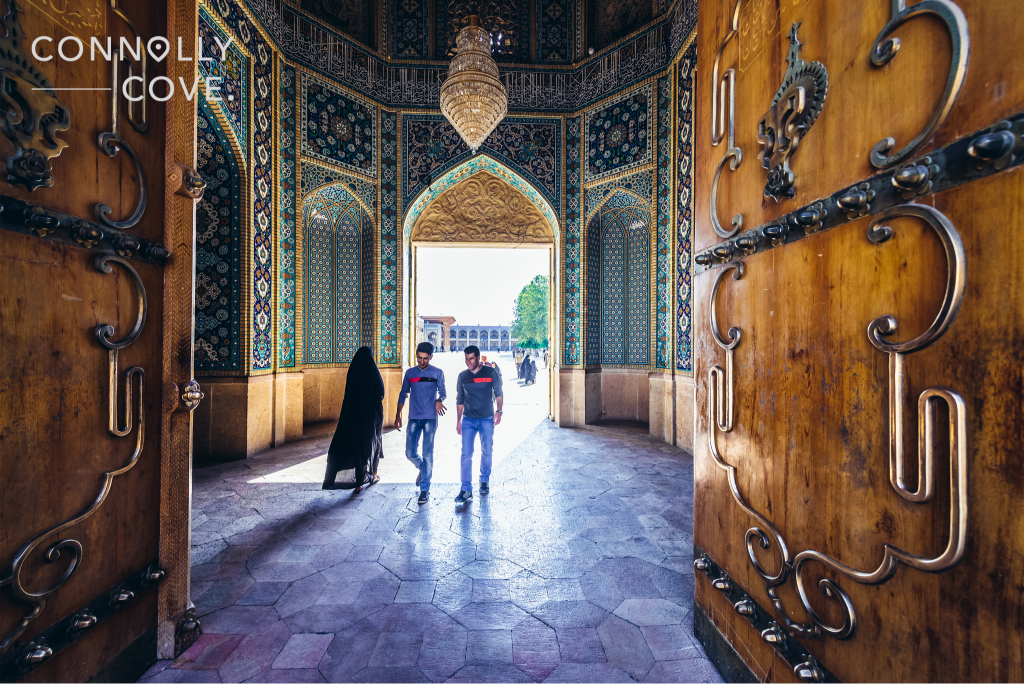
Enjoy the enchanting poetic city of Shiraz, the birthplace of renowned poets like Hafez and Saadi. Wander through the fragrant Naranjestan Garden, marvel at the kaleidoscopic Nasir al-Molk Mosque, and pay homage to the tombs of these literary giants.
Yazd
Step back in time amidst the mudbrick wonders of Yazd, an ancient Silk Road city boasting labyrinthine alleys, wind towers, and Zoroastrian fire temples. Don’t miss the Jameh Mosque, a masterpiece of Iranian architecture, and marvel at the silence of the Towers of Silence, used by Zoroastrians for centuries.
Persepolis
Journey back to the Achaemenid Empire at Persepolis, a UNESCO World Heritage Site showcasing towering columns, intricate reliefs, and impressive gates. Immerse yourself in the grandeur of this ancient ceremonial capital and imagine the echoes of history.
Kashan
Discover the hidden beauty of Kashan, a city renowned for its traditional houses, stunning gardens, and rich history. Step into the opulent Tabatabaei House, stroll through the serene Fin Garden and admire the intricate tilework and craftsmanship of the Agha Bozorg Mosque.
Bam Citadel
Witness the resilience of the Bam Citadel, a UNESCO World Heritage Site that rose from the ashes of a devastating earthquake. Explore the ruins of this ancient Silk Road city, climb the imposing walls, and admire the impressive engineering feat that stood for centuries.
Türkiye
Türkiye, where East meets West in a vibrant melody, boasts a history as rich as its diverse landscapes. From empires that shaped civilisations to the bustling metropolis of Istanbul, prepare to be captivated by the tapestry of experiences this land offers.
Türkiye’s past stretches back millennia, with civilisations like the Hittites, Greeks, and Romans leaving their mark on the landscape. Witness the ancient city of Troy, immortalised in Homer’s Iliad, or marvel at the UNESCO World Heritage site of Hattusha, the Hittite capital boasting monumental gates and temples.
In the 7th century AD, Byzantium rose, culminating in the magnificent Byzantine Empire. Stand in awe of the Hagia Sophia, once a church, then a mosque, and now a museum, adorned with breathtaking mosaics and intricate architecture. Explore the opulent Topkapi Palace, the seat of Ottoman power for centuries, and delve into the mysteries of the Basilica Cistern, an underground engineering marvel.
Established in the 13th century, the Ottoman Empire left an indelible mark on Türkiye. Stroll through the Grand Bazaar, one of the world’s oldest and largest covered markets, or visit the Blue Mosque, renowned for its exquisite tiles and soaring domes. Take a boat trip on the Bosphorus Strait, dividing Europe and Asia, and admire the Ottoman palaces dotting the shores.
Main Tourist Destinations
From mystical mountains to vibrant cities and ancient ruins to sun-kissed beaches, your journey through Türkiye promises to be an unforgettable tapestry of experiences in Western Asia.
Istanbul
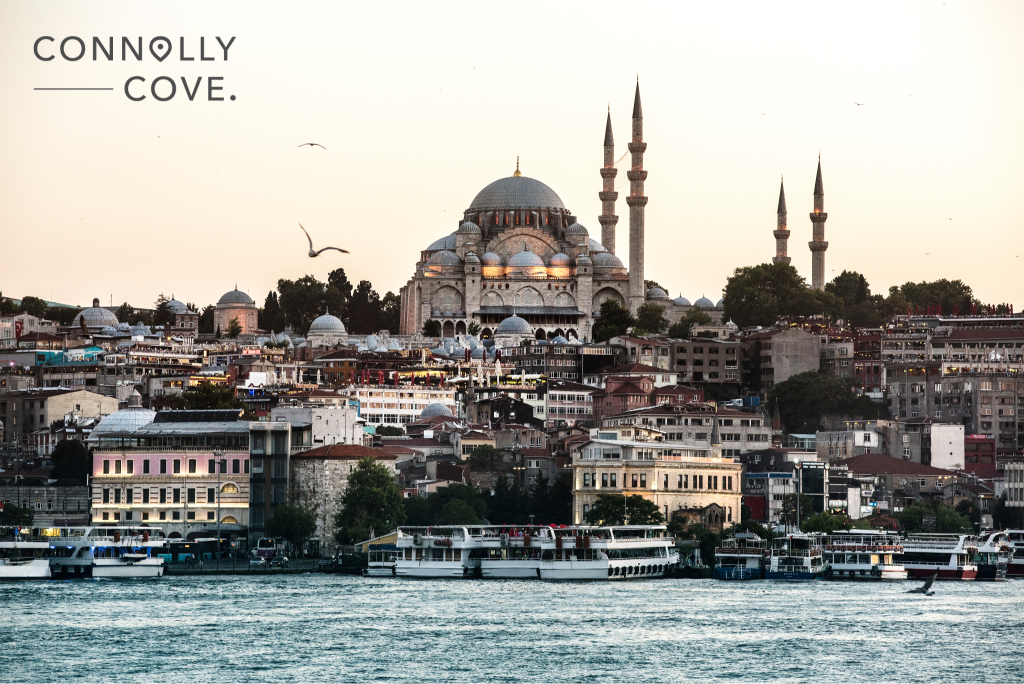
Experience the vibrant pulse of Istanbul, a city straddling two continents. From the historic Sultanahmet district to the trendy Beyoğlu, discover mosques, museums, bustling bazaars, and mouthwatering cuisine. Take a ferry to the Princes’ Islands and enjoy a day of beaches and serenity.
Cappadocia
Step into a surreal landscape of fairytale chimneys carved by volcanic ash and erosion. Take a hot air balloon ride above the valleys, explore cave dwellings and churches, and witness the magic of the “Rose Valley” at sunset.
Pamukkale
Marvel at the cascading white terraces of Pamukkale, formed by mineral-rich hot springs. Float in the Cleopatra’s Pool, a natural thermal bath, and explore the ruins of Hierapolis, an ancient Roman spa city.
Ephesus
Journey back to Roman times at Ephesus, once a bustling port city and visit the Temple of Artemis, one of the Seven Wonders of the Ancient World. Explore the Library of Celsus, the Great Theatre, and imagine the grandeur of this bygone era.
Antalya
Explore the charming old town of Kaleici, delve into the underwater world with scuba diving, or discover the ancient city of Aspendos, with its well-preserved Roman theatre.
Lebanon and Jordan
Lebanon and Jordan, with their diverse cultural landscapes, are home to traditions that have evolved over millennia. From the ancient Phoenician civilisation to the influences of Arab, Byzantine, and Islamic rule, both countries have a wealth of cultural treasures to explore. Whether it’s the pottery of the Neolithic era or the high-level diplomacy of the modern era, Lebanon and Jordan offer a glimpse into the tapestry of traditions that define Western Asia.
Lebanon
Lebanon’s past is a mosaic of civilisations, from the Phoenicians who sailed the seas to the Romans who left their mark in Baalbek. Christianity flourished here, and its legacy persists in Byblos.
In the 16th century, the Ottoman Empire brought a blend of Muslim and Christian influences, giving rise to Lebanon’s diverse cultural fabric. Beirut, once the “Paris of the Middle East,” pulsated with cosmopolitan life before war and turmoil forced a rebuilding period. Today, this resilient city balances its scars with a vibrant spirit, offering delicious cuisine, bustling nightlife, and a glimpse into its turbulent past.
Beirut
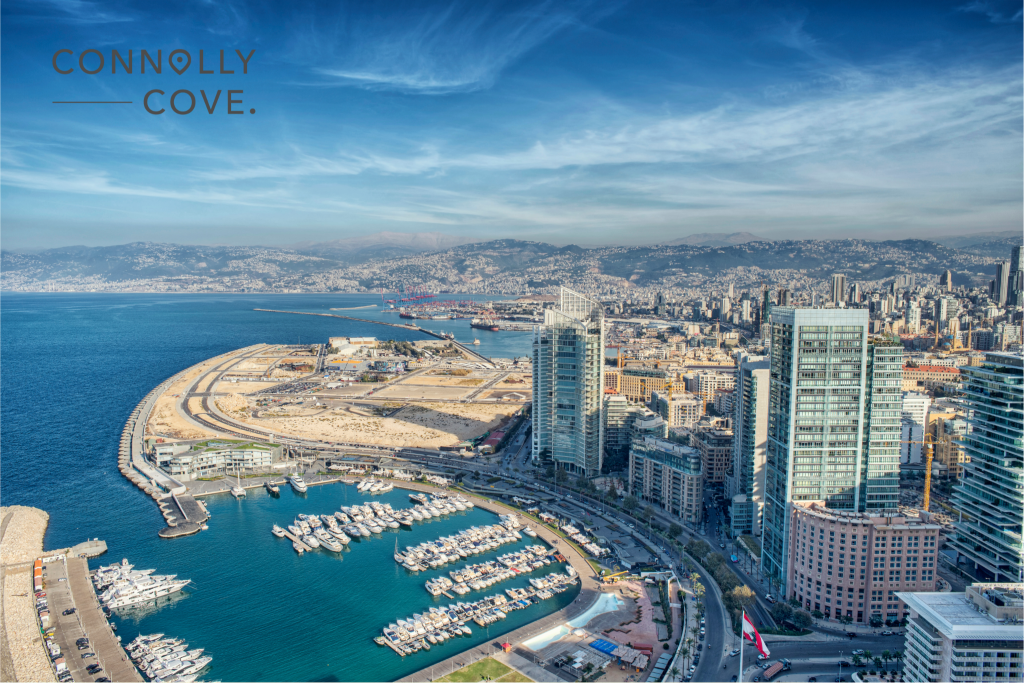
Immerse yourself in the pulsating heart of Lebanon. Explore the souks for unique treasures, admire the art scene in Gemmayze, and sip cocktails on rooftop bars overlooking the Mediterranean. Don’t miss the National Museum to delve into Lebanon’s rich history.
Jeita Grotto
Discover a mesmerising network of underground caves adorned with stalactites and stalagmites. Take a boat ride through the Grand Grotto, one of the longest in the world, and marvel at the natural light show.
Byblos
Step back in time through the ancient ruins of Byblos. Explore the Crusader castle, Roman amphitheatre, and Phoenician necropolis, unravelling layers of history at every turn.
Mzaar Ski Resort
Enjoy winter sports amidst breathtaking mountain scenery. Ski down powdery slopes, soak in hot springs, and savour Lebanese cuisine in charming mountain villages.
Jordan
Jordan’s land boasts a history etched in stone. Nabataeans left their mark in the awe-inspiring city of Petra, carved into rose-red cliffs and a UNESCO World Heritage Site. Roman influence shines in Jerash, with its well-preserved temples and amphitheatre. Islamic traditions flourish in the Dome of the Rock, a jewel on Jerusalem’s Temple Mount.
Petra
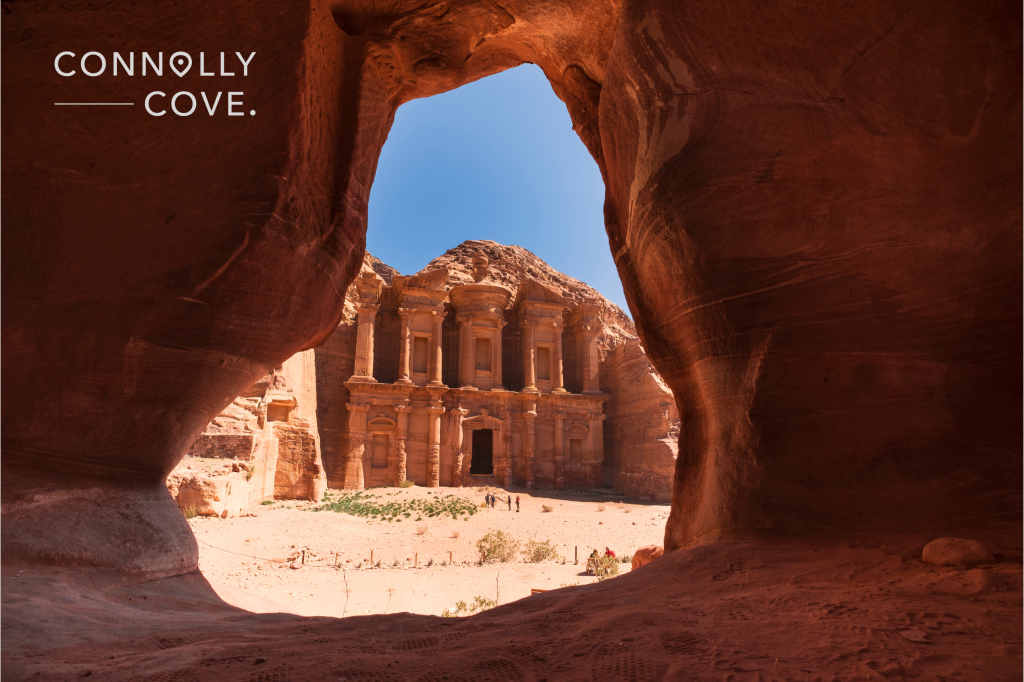
Experience the magic of Petra, an ancient city carved into rock faces. Explore the Treasury, Siq passage, and Roman amphitheatre, feeling the weight of history in every step.
Wadi Rum
Embark on a jeep safari through the vast desert landscapes of Wadi Rum, known as “Lawrence of Arabia’s playground.” Hike to sandstone arches, climb sand dunes, and camp under the Milky Way.
Dead Sea
Float in the buoyant waters of the Dead Sea, renowned for its mineral-rich mud and therapeutic properties. Enjoy spa treatments, relax on the shores, and witness a natural wonder unlike any other.
Jerash
Step into Roman times at Jerash, one of the best-preserved Roman cities outside of Italy. Explore temples, baths, and an amphitheatre, imagining the bustling trade routes of the past.
The Arabian Jewel Box
The Arabian Peninsula, kissed by the turquoise waters of the Red Sea and the Persian Gulf, beckons with ancient sands, modern marvels, and vibrant cultures. Let’s explore four dazzling gems in Western Asia: Saudi Arabia, the United Arab Emirates, Qatar, and Kuwait.
Saudi Arabia
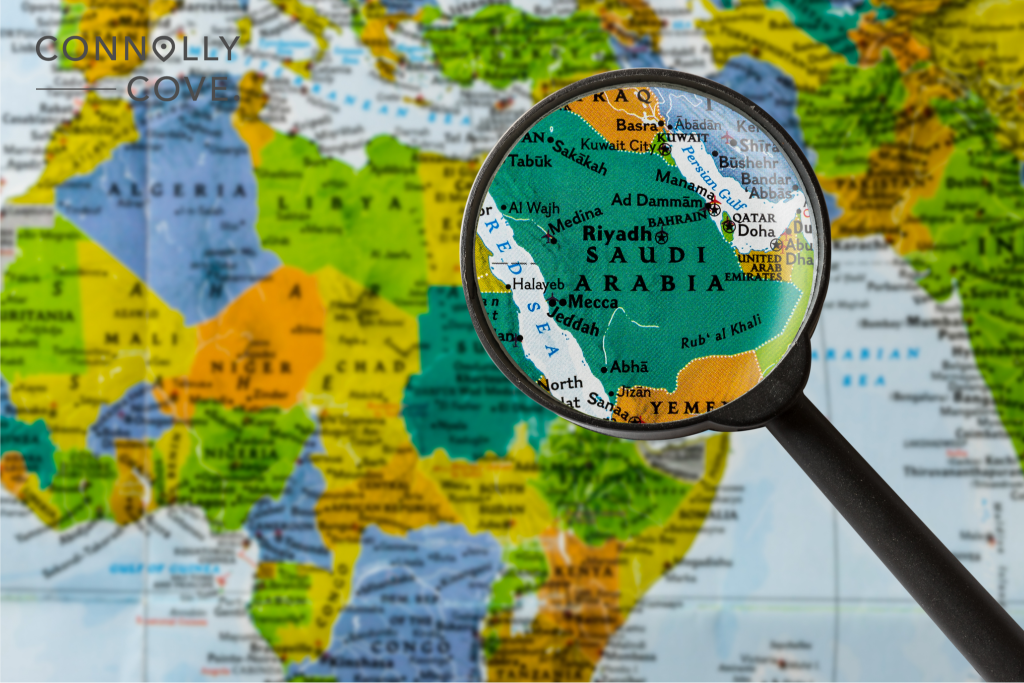
Saudi Arabia, the cradle of Islam, pulsates with the rhythm of faith. Mecca and Medina, Islam’s holiest cities, draw millions for pilgrimage annually. Whispers of the past echo in the vast Empty Quarter, once traversed by ancient caravans. Yet, modern metropolises like Riyadh and Jeddah hum with innovative energy, showcasing architectural wonders and a thriving art scene.
Main Tourist Delights
- Madain Saleh: Step back in time amidst Nabataean tombs carved into sandstone cliffs, a UNESCO World Heritage Site. Imagine pre-Islamic caravans traversing these ancient trade routes.
- Al Wahbah Oasis: Discover a verdant haven in the Nefud desert, with mudbrick houses and ancient mosques offering tranquil respite from the sands.
- Farasan Islands: Dive into an aquatic paradise of turquoise waters and pristine beaches. Swim with dolphins, explore vibrant coral reefs, and witness diverse marine life in this island sanctuary.
- Jeddah Old Town: Wander through a maze of vibrant souks and traditional houses adorned with ornate windows. Immerse yourself in the bustling atmosphere and rich cultural heritage of this UNESCO World Heritage Site.
- Formula One Grand Prix in Jeddah: Feel the adrenaline rush at the Saudi Grand Prix, held on the Jeddah Corniche Circuit. Witness high-speed racing against the Red Sea’s mesmerising backdrop.
Qatar
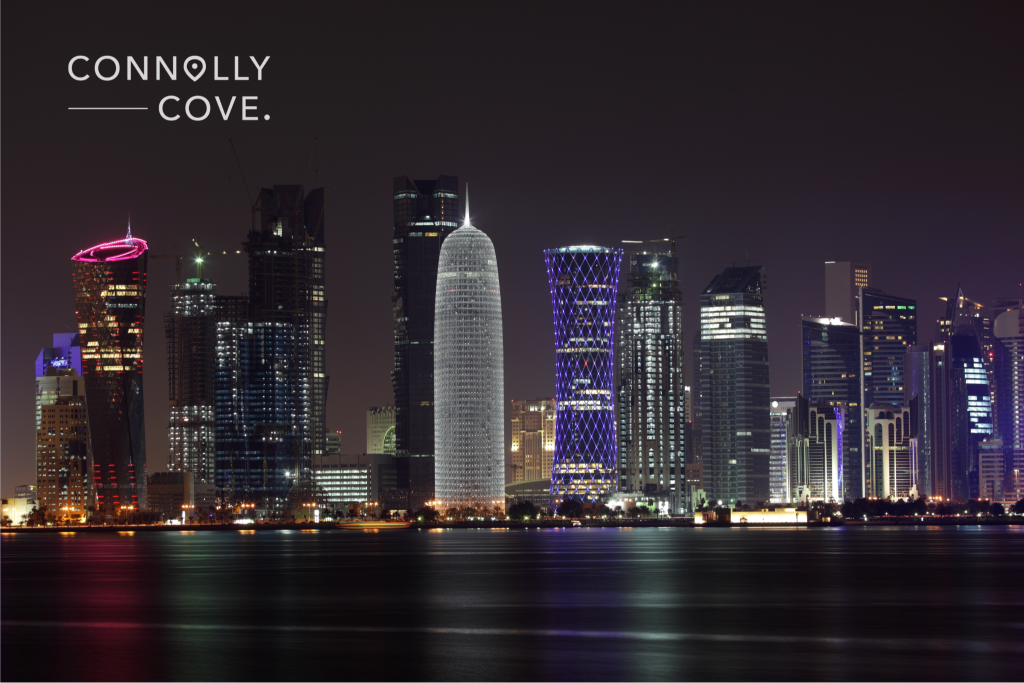
Qatar, a gem jutting into the Persian Gulf, has transformed from a pearl-diving haven to a cultural oasis in the Middle East. Its cosmopolitan capital, Doha, boasts futuristic skyscrapers housing the Museum of Islamic Art and the iconic Torch Doha Hotel. Desert landscapes offer adventure, while traditional souks and heritage sites whisper tales of the Bedouin past.
Main Tourist Enchantments
- Souq Waqif: a souk brimming with spices, perfumes, textiles, and handicrafts. Bargain with vendors, sip fragrant Arabic coffee, and soak in the vibrant pulse of traditional Qatari life.
- Museum of Islamic Art: Journey through millennia of Islamic art and culture within this architectural marvel. Admire calligraphy, ceramics, textiles, and manuscripts showcasing the artistry of the Muslim world.
- Katara Cultural Village: Discover a tapestry of art, architecture, and performance. Visit museums, galleries, and theatres, and enjoy traditional dhow boat rides in this picturesque waterfront haven.
- Desert Safaris: Embark on a thrilling adventure through the dunes. Ride camels, sandboard down slopes, and witness breathtaking desert sunsets, painting the sky in vibrant hues.
- FIFA World Cup 2022: Enjoy the legacy of the recent FIFA World Cup, where Qatar proudly hosted the biggest footballing event, showcasing its state-of-the-art stadiums and welcoming fans from across the globe.
United Arab Emirates
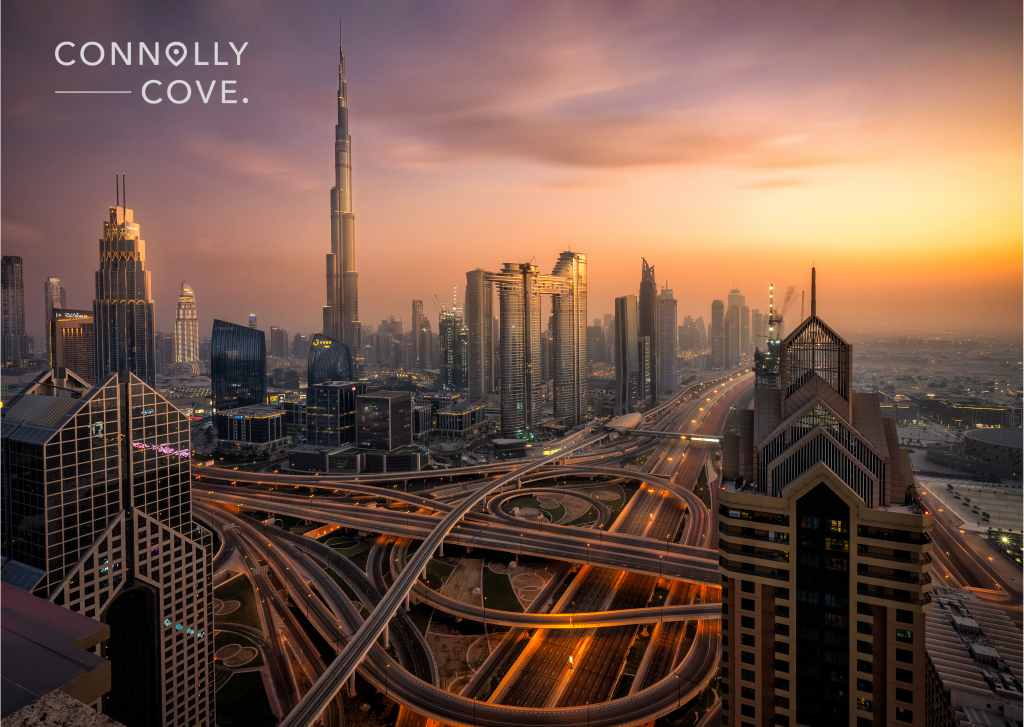
The UAE continues to captivate with its dynamic evolution, weaving a symphony of seven emirates, each offering unique experiences. Dubai’s skyline keeps reaching for the sky, with the Museum of the Future opening its doors and the iconic Burj Khalifa constantly surpassing itself with new attractions like the record-breaking Sky Walk. Abu Dhabi, meanwhile, unveils its cultural tapestry with the Louvre Abu Dhabi hosting groundbreaking exhibitions like “Impressionism: From Manet to Gauguin”.
Main Tourist Harmonies
- Burj Khalifa’s Sky Walk: a heart-stopping experience on the world’s highest outdoor walk, suspended 828 meters above Dubai. Witness unparalleled panoramic views and feel the adrenaline rush.
- Museum of the Future: Unravel the mysteries of tomorrow at this architectural marvel dedicated to innovation and human advancement. From thought-provoking exhibitions to interactive experiences, the future is now in Dubai.
- Louvre Abu Dhabi’s “Impressionism: From Manet to Gauguin”: Witness iconic works by Monet, Renoir, Degas, and Gauguin, and relive the movement’s revolutionary spirit.
- Hatta Dam Kayak Tour: Escape the urban buzz and paddle through the serene waters of Hatta Dam, nestled amidst the Hajar Mountains.
- Sharjah Biennial 15: Dive into contemporary art at the Sharjah Biennial, one of the Middle East’s most prestigious art events.
Kuwait
Kuwait, the land of hospitality and cultural treasures in Western Asia, continues its exciting modernisation journey. Kuwait City’s skyline boasts ambitious projects like the Jaber Causeway Bridge, the world’s longest bridge over water. Meanwhile, historical gems like the Grand Mosque and Failaka Island remain timeless destinations for cultural immersion.
Main Tourist Enchantments
- Kuwait National Museum: Discover the rich history of Kuwait at this comprehensive museum’s archaeological finds, traditional crafts, and exhibits tracing their journey from pearl diving to modern oil wealth.
- Failaka Island Archaeological Tour: home to remnants of ancient Greek and Islamic civilisations. Explore Hellenistic temples, mosques, and archaeological sites offering a glimpse into Kuwait’s long and fascinating past.
- Mangaf Waterfront Market: Dive into the vibrant local life at the Mangaf Waterfront Market. Peruse fresh seafood, traditional handicrafts, and spices, and soak in the authentic Kuwaiti atmosphere.
- Kuwait Desert Festival: The annual Desert Festival is held in late February or early March. Witness camel races, falconry displays, and traditional performances, and enjoy Bedouin hospitality under the desert sky.
Iraq
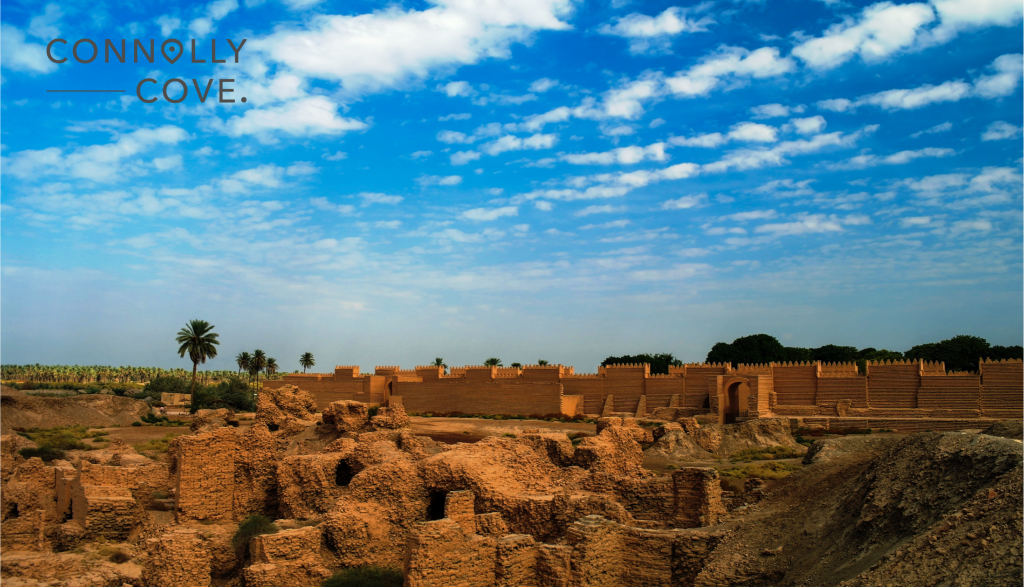
Iraq, the cradle of civilisation in the Middle East, whispers ancient tales through millennia-old ruins and echoes bustling contemporary life in vibrant cities. Located between the Tigris and Euphrates rivers, this land has witnessed empires flourish and fall, from the majestic Sumerians to the mighty Abbasids. Its fertile plains gave birth to agriculture, birthed the first writing systems, and nurtured iconic figures like Abraham and Hammurabi.
Stepping Back in Time
- Babylon: Walk the hallowed grounds of this legendary city, marvelling at the reconstructed Ishtar Gate and picturing Nebuchadnezzar’s Hanging Gardens.
- Ur: Unearth the secrets of Mesopotamian royalty at the Ziggurat of Ur, Abraham’s presumed birthplace, and explore the Royal Cemetery, revealing lavish tombs of ancient rulers.
- Nineveh: Discover the remnants of the Assyrian capital, once the largest city in the world, where towering reliefs whisper stories of conquests and ancient gods.
- Samarra: Witness the Great Mosque’s iconic Malwiya Minaret, its spiral ramp mirroring a celestial ascent, and stand amazed before the opulent Al-Askari Mosque, a glittering testament to the Shi’a faith.
Beyond the Ancient Walls
- Erbil Citadel: Perched atop a 6,000-year-old mound, this UNESCO World Heritage Site is a bustling tapestry of markets, mosques, and Kurdish culture.
- Kurdistan Mountains: Hike through breathtaking landscapes, explore charming villages clinging to rugged cliffs, and immerse yourself in the rich Kurdish traditions.
- Marshlands of Mesopotamia: Glide through shimmering canals on traditional reed boats, encounter diverse birdlife, and experience the unique culture of the Marsh Arabs.
- Baghdad: Breathe in the cosmopolitan air of the capital, sip strong Arabic coffee in bustling cafes, and delve into the literary spirit on Al-Mutanabbi Street, a haven for book lovers.
Cultural Tapestry of the Western Asia/Arab World
The countries stretching from Iraq to Yemen, encompassing the Arabian Peninsula and beyond, share a rich tapestry of cultural connections woven through millennia of history, shared faith, and geographic proximity. While unique identities and nuances flourish within each nation, several unifying threads bind them.
Language
Arabic reigns supreme in the Middle East, with varying dialects adding spice to the linguistic stew. From the lyrical cadences of the Levant to the guttural pronunciations of the Gulf, the rhythm of Arabic binds communities, facilitates trade, and serves as a cornerstone of cultural expression.
Religion
Islam plays a profound role in shaping customs, social structures, and artistic expressions. Mosques stand as majestic landmarks, echoing with the melodious call to prayer five times a day. Ramadan, the holy month of fasting, fosters a sense of shared piety and communal spirit. Christianity is also one of the main religions in the Middle East. With churches and Christian customs, most of the population lives in harmony.
Cuisine

Western Asia countries are known for their rich flavours and tasty plates. Mezze platters brimming with hummus, baba ghanoush, and dolmas tempt the palate. Fragrant spices like cardamom and saffron dance in stews and tagines, while succulent grilled meats and fresh seafood tantalise taste buds. Dates, a symbol of hospitality, offer a touch of sweetness.
Traditions
Hospitality is deeply ingrained, with guests welcomed with open arms and steaming cups of Arabic coffee. Storytelling in coffeehouses keeps history alive, while intricate henna designs adorn hands and feet for celebrations. From joyous Eid feasts to solemn Ramadan observances, traditions bind communities across borders.
Arts and Crafts
Calligraphy transforms Arabic script into mesmerising art, adorning buildings and textiles. Carpets woven with vibrant threads tell stories without words, while intricate tilework embellishes mosques and palaces. Music and dance pulsate with life, from the melancholy strains of the oud to the energetic rhythms of dabke.
From the hushed whispers of ancient ruins to the pulsating energy of modern capitals, each country in Western Asia sings a unique melody. Yet, all share a harmony of shared history, vibrant traditions, and a spirit of resilience. Whether you seek the echoes of Mesopotamia’s whispers or the dazzling lights of Dubai, Western Asia promises a journey that will etch itself onto your soul, forever changing you with its captivating beauty and enduring spirit.
FAQ
What countries are considered Western Asia?
Western Asia includes countries such as Bahrain, Cyprus, Armenia, and many more. It is also known as West Asia.
What is the significance of Mesopotamia in Western Asian culture?
Mesopotamia, located in Western Asia, is often called the “cradle of civilisation” as it is one of the earliest known human civilisations.
What is the state of sustainable development in Western Asia?
Western Asia faces challenges in achieving sustainable development due to various factors such as geopolitical unrest, resource management, and economic disparities among its nations.
How does Western Asia contribute to the global economy?
Western Asia’s contribution to the global economy is significant, particularly in sectors such as energy resources, trade, and finance, which play a vital role in the worldwide market.
What are some current challenges facing Western Asia?
Western Asia faces contemporary challenges like ongoing conflicts in the Middle East, social reforms, and efforts towards promoting peace and stability within the region.


